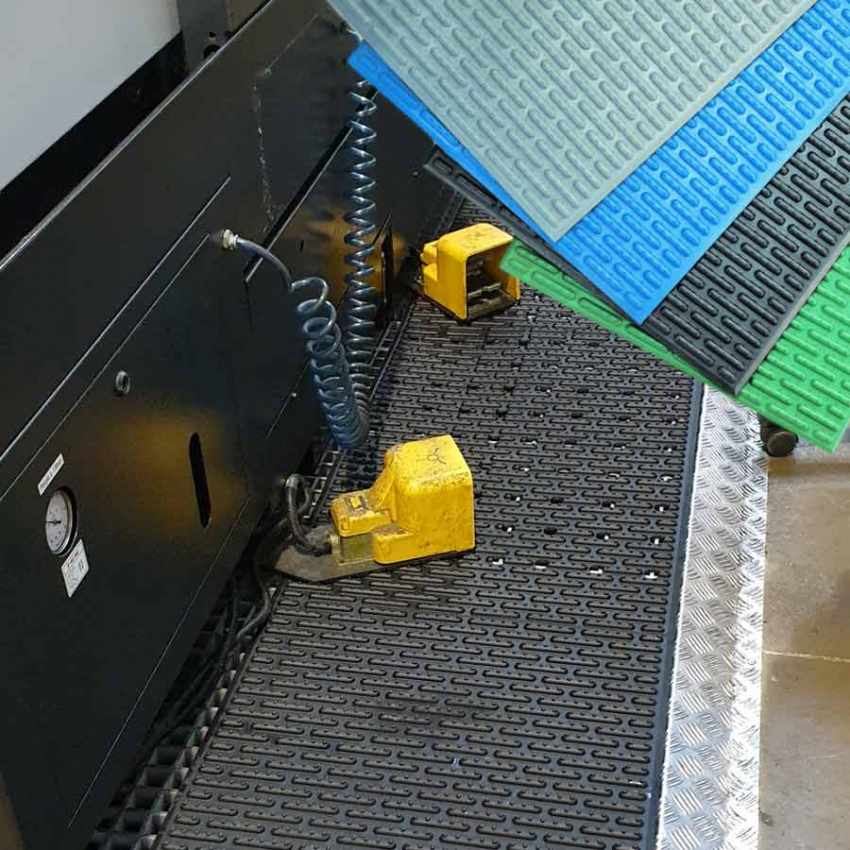












Indoor traffic - Heavy traffic
This anti-fatigue mat is specially designed for high-heat environments where resistance to petroleum and petrochemicals is important. It is ideal for welding and metal workshops, thanks to its ribbed profile with pimples.
Available in standard and custom sizes.
Designed for areas where resistance to oil, petrochemicals and heat is of prime importance, making it the ideal mat for welding or metalworking shops. To promote air flow or in situations of excessive liquid volumes, can be easily trimmed to meet these new requirements. It is also available in three colors to reduce the risk of cross-contamination. Resistant to many acids, as well as to hot metal shavings and brief exposures to heat up to 600°C (1112°F).
- Can be trimmed to facilitate air or liquid flow.
- Available in 3 colors to limit the risk of cross-contamination
- Acid-resistant
- Resistant to hot metal chips
- Withstands brief exposure to heat up to 600°C
- Virgin nitrile rubber
- Customized to any size and shape
- Beveled edges (yellow available)
- High-pressure washable
- Silicone- and latex-free
RECOMMENDED APPLICATIONS:
Metal workshops, welding.
![]()
| Softline |
Data sheet
| Format | Mat |
| Location | Interior |
| Properties | Anti-fatigue Draining |
| Composition | Virgin nitrile rubber |
| Thickness | 15 mm |
| Borders | With Without |
| Resistant to chemicals | Yes |
| Operating temperature | - 40°C to 150°C |
| Intensity of use | Intense |
Industrial mats meet the needs of ergonomic workstations and employee well-being.
They prevent:
There are many uses for industrial mats:
Safety criteria: The mat must cover the entire workstation, be firmly attached to the floor, not shift or slide, and have bevelled edges to prevent falls.
Thickness and flexibility criteria: Contrary to what you might think, you shouldn't choose a very thick or very soft mat. The mat should have a certain elasticity, but still allow a comfortable standing position, without the user feeling slumped.
Environmental criteria :
Environmental hazard criteria : To establish more precise characteristics for a mat (antistatic properties or fire resistance etc...) we need to take into account the hazards present in the environment where the mat will be installed.
Where hazardous liquids are present in the working environment, the anti-slip properties and chemical resistance of industrial mats should be taken into account. The presence of openings on mats to allow the evacuation of fluids is essential.
Traffic criteria: We need to take into account the traffic that takes place on the equipment: how many workers can walk on it? How often, etc., in order to choose the most suitable mat.
Prevent the many problems associated with poor workstation ergonomics: RSI, static shock, bacterial proliferation, etc.
We offer a wide choice of industrial mats: on rolls, in standard sizes, made-to-measure or modular mats to suit all types of workstations.